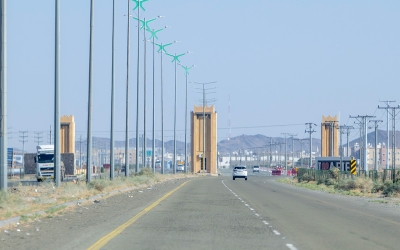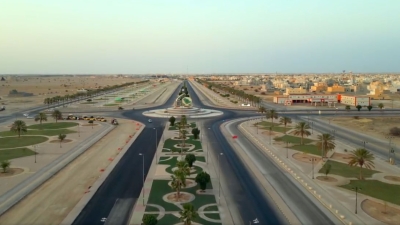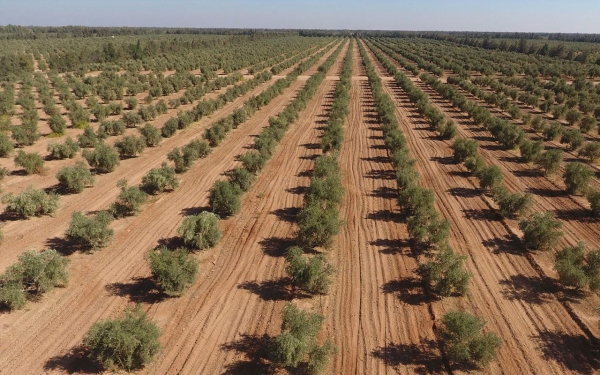
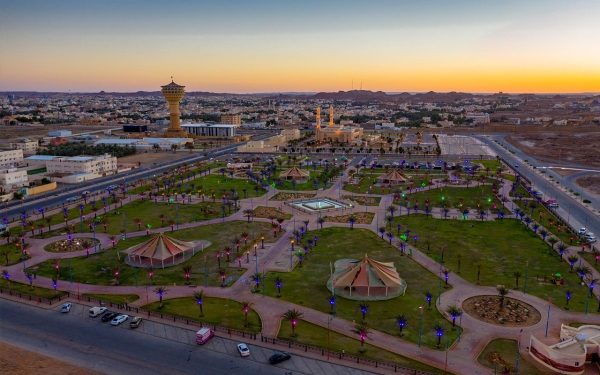
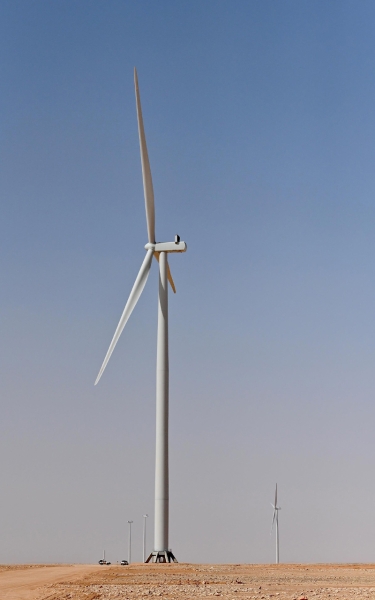
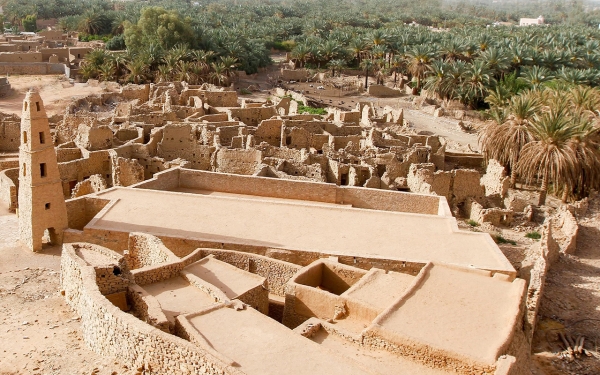
Al-Jawf Province (romanized: Minṭaqat Al Jawf) is one of the thirteen administrative regions in the Kingdom of Saudi Arabia. It ranks ninth among provinces in terms of surface area and fourth in terms of the lowest population. Located in the north of the Kingdom, it shares its northern border with the Hashemite Kingdom of Jordan; from the east, with the Northern Borders Province; from the west, with Tabuk Province; and from the south, with Hail Province. The city of Sakaka is its administrative capital, its emirate’s headquarters, and the urban center in the province.
Surface area and population of al-Jawf Province
The population of al-Jawf Province is 595,822 people, according to the 2022 Saudi Census, 39.7 percent of whom reside in the administrative capital, Sakaka. Saudis make up about 67.7 percent of the province's total population.
Al-Jawf Province covers 4.3 percent of the Kingdom's territory, equivalent to 85,000 km. Notwithstanding its expansive area, only 1.6 percent of the Saudi population resides in al-Jawf. Thus, the province ranks ninth in population density among Saudi provinces, at a rate of 5.8 people per km of its territory.
Unlike most provinces of the Kingdom, there is no governorate within the geographical area of al-Jawf Province bearing its name. Instead, al-Jawf refers to the entire geographical area, which includes: the administrative capital Sakaka and the three governorates of al-Qurayyat, Tabarjal, and Dawmat al-Jandal, as well as thirty-three local centers. Since 2018, Prince Faisal Bin Nawaf Bin Abdulaziz Al Saud has been the province’s governor.
On December 12, 2023, a Royal Order was issued appointing Prince Miteb Bin Mishal Bin Badr Bin Saud Bin Abdulaziz as deputy governor of al-Jawf with excellent rank.
Al-Jawf Regional Airport in Sakaka City serves the province, as does al-Qurayyat Domestic Airport in the north of the province, along with Turaif Domestic Airport and Arar Domestic Airport from outside the province, both a two-hour drive from al-Jawf.
Renewable energy in al-Jawf Province
Al-Jawf Province is the Kingdom's renewable energy hub and one of the mainstays of economic diversification away from oil dependence. In the north of the province, in Dawmat al-Jandal Governorate, lies the largest wind farm in the Middle East, generating four hundred MW of green energy, in addition to the Sakaka Solar Power Plant located in the administrative capital, spanning an area of six km to produce three hundred MW of solar photovoltaic power.
Agriculture in al-Jawf Province
Al-Jawf Province is described as a diversified food basket and a pillar of Saudi food security, as its territory includes the world's largest state-of-the-art olive farm. The province contributes an estimated 16.55 percent of the Kingdom's total vegetable production, topping all other areas in the Kingdom with about 3,500 agricultural projects and 12,500 farms. Al-Jawf has the highest agricultural output in the Kingdom compared to other provinces and adopts the latest irrigation methods to conserve water and reduce waste, such as drip irrigation and linkage to a computerized system that provides water amounts needed by farms according to sensor data in the fields.
Population in al-Jawf Province
Al-Jawf Province is ranked tenth in the Kingdom in terms population, totaling 595,822 individuals according to the 2022 Saudi Census, equaling to 1.85 percent of the total population of the Kingdom.
Monuments in al-Jawf Province
Al-Jawf Province enjoys a rich cultural heritage, containing historical sites documenting the beginning of the history of human settlement and the early Islamic age, as evidenced by archaeological inscriptions in Sakaka City, Zaabal Castle in Sakaka, Mowaisen Castle, Marid Castle, Kaf Palace, and Omar Ibn al-Khattab Mosque. The province was also a historic stop through which a continental route passed, connecting the Kingdom and the Gulf countries with the Kingdom’s northern neighbors.
Al-Jawf Province is located on low-lying ground compared to the rest of the Kingdom's provinces, and its name is derived from this very fact. It is an old designation that is used in the sense of hole or doline, i.e., a low-lying place.
North of al-Jawf Province, fifty km from the administrative capital, lies Dawmat al-Jandal Lake, the Kingdom's largest lake, whose shores serve as a national theater for holding festivals and celebrations.
Al-Jawf Province has one public university, Jouf University, with about eighteen faculties. It is located in the administrative capital, Sakaka, and its branches are spread across the rest of the governorates.
Climate of al-Jawf Province
A desert continental climate prevails in al-Jawf Province; cold during the winter and hot and dry in the summer. Average summer temperatures hover around thirty degrees Celsius but may reach a maximum of forty-two degrees Celsius. The average winter temperature is 8.5 degrees Celsius, but it plummets during January to between two and seven degrees below zero, with chilly episodes occurring that sometimes reach the point of freezing.
Related quizzes
Related articles

